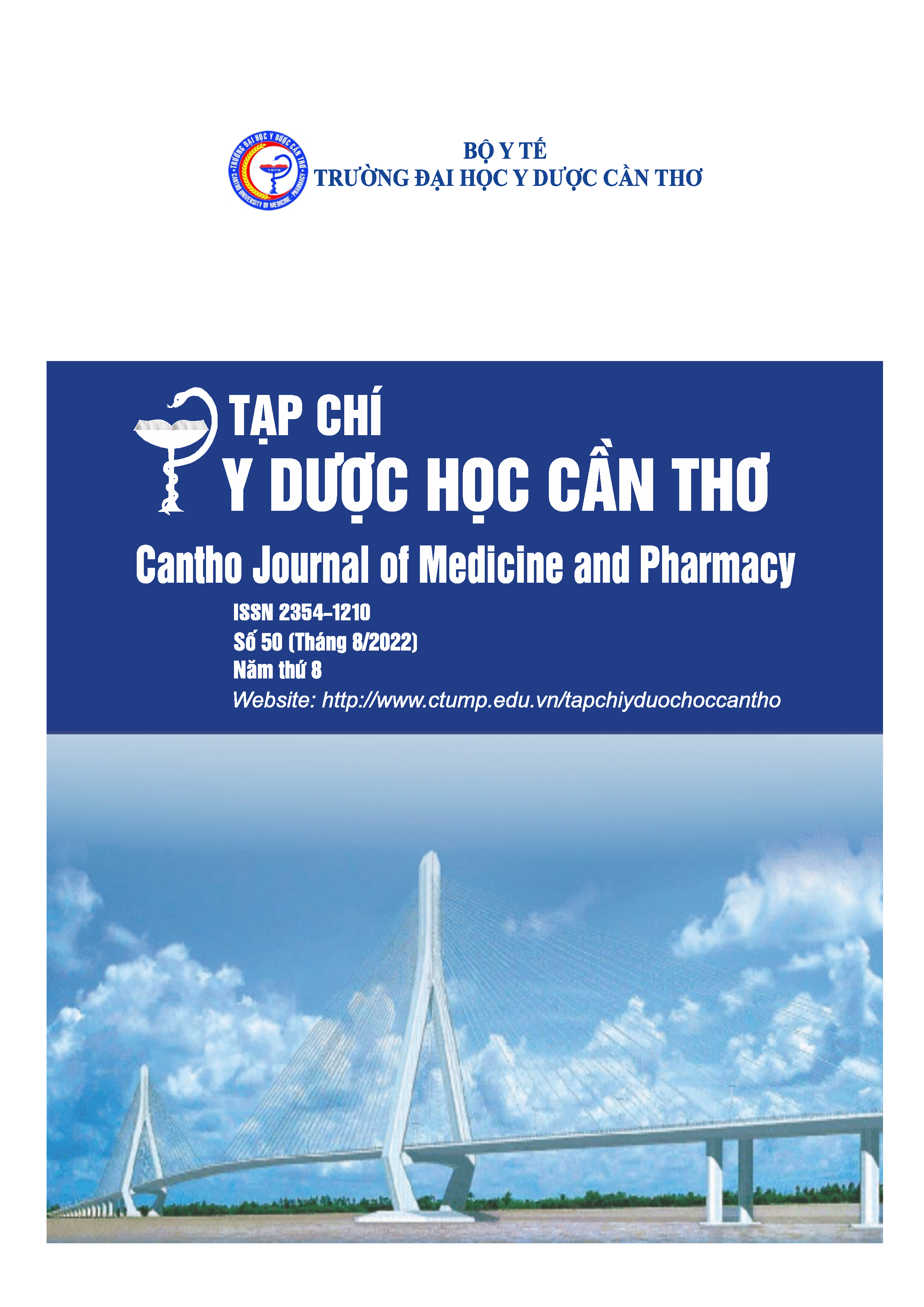CHARACTERISTICS OF SEPSIS AMONG PRETERM NEWBORN AT CAN THO CHILDREN’S HOSPITAL
Main Article Content
Abstract
Background: Sepsis of the preterm newborn is a severe systemic infection in newborns under 37 weeks of gestation and it is the second leading cause of death in preterm newborn, after respiratory failure. Objectives: Describe the clinical, subclinical characteristics; determine bacterial etiology of sepsis in premature newborns. Materials and methods: A cross-sectional descriptive study was conducted on newborns with a gestational age of less than 37 weeks, diagnosed with sepsis based on clinical evidence, at Can Tho Children’s Hospital from January 2021 to June 2022. Results: In 98 children studied, there were 58.2% boys and 41.8% girls. The average gestational age was 32.5 weeks and most children weight between 1500-<2500 grams (61.2%). Clinical symptoms were diverse in many organs but there were no specific symptoms, often presenting with respiratory symptoms and digestive symptoms. Regarding subclinical, white blood cell count increased above 20000/mm3 or decreased below 5000/mm3 accounted for 32.7%. Therewere 54.3% of children with anemia, platelets less than 150000/mm3 acounted for 26.5%, CRP >10 mg/dl accounted for 61.2%. Positive blood cultures accounted for 31.0%, of which Gram- positive bateria accounted for 68.4%, Gram-negative bacterias 31.6%. The bacteriological agents of Gram-positive group were Staphylococcus epidermidis (75.0%), Staphylococcus haemolyticus (20.0%), Staphylococcus lentus (5.0%) and the Gram-negative group included Acinobacter baumannnii (27.25%), Pseudomonas species (27.5%), Klebsiella pneumonia (18.2%). Conclusion: Sepsis in preterm newborn has diverse clinical symptoms, less variable subclinical and was mostly caused by Gram-positive bacteria.
Article Details
Keywords
Sepsis, preterm newborn
References
2. Bộ Y tế (2015), Báo cáo chung tổng quan ngành Y tế năm 2015, Bộ Y tế.
3. Nguyễn Thanh Liêm, Lâm Thị Mỹ (2003), “Đặc điểm dịch tễ học, lâm sàng, huyết học, vi trùng học ở trẻ sơ sinh non bị nhiễm trùng huyết tại BV Nhi đồng 1 từ tháng 9-99 đến 4-04”, Tạp chí Y học Thành phố Hồ Chí Minh, 9(1), tr.196-201.
4. Lê Thị Công Hoa (2016), Tình hình nhiễm khuẩn huyết tại bệnh viện ở trẻ sơ sinh bệnh viện Trung ương Huế năm 2014, Y Học TP Hồ Chí Minh 20 (5), tr. 77-84.
5. Nguyễn Ngọc Vi Thư, Phạm Thị Tâm, Võ Thị Khánh Nguyệt, (2019), Nghiên cứu đặc điểm lâm sàng, cận lâm sàng và vi khuẩn học của nhiễm trùng huyết sơ sinh, Tạp Chí Y Dược học Cần Thơ 19 tr.1-7.
6. Nguyễn Thanh Nam (2020), “Nghiên cứu đặc điểm lâm sàng, cận lâm sàng, nguyên nhân và đánh giá kết quả điều trị nhiễm khuẩn huyết sơ sinh đủ tháng tại Bệnh viện Nhi đồng Cần Thơ năm 2019-2020”, Luận văn bác sĩ chuyên khoa 2, Trường Đại học Y Dược Cần Thơ, tr.48-53.
7. Nguyễn Thị Ngọc Tú (2022), “Đặc điểm lâm sàng, cận lâm sàng và kết quả điều trị nhiễm khuẩn huyết sơ sinh đủ tháng tại Bệnh viện Nhi Trung ương”, Luận văn Tiến sĩ Y học, Viện Vệ sinh dịch tễ Trung ương, Hà Nội, tr.65-75.
8. Phạm Nguyễn Hải Nam (2019), “Đặc điểm của nhiễm khuẩn huyết bệnh viện tại Khoa Hồi sức sơ sinh Bệnh viện Nhi đồng 2”, Y Học TP Hồ Chí Minh, 23(1), tr.139-144.
9. Rajani M, Javeri Y (2017), “Epidemiology of blood stream infections in neonatal intensive careunit at a tertiary care centre”, Journal of Pure & Applied Microbiology, 11(4), pp.1999-2005.
10. Wang Shanmei, Chen Sheng, Feng Wei, Sun Fengjun, et al. (2017), “Clinical Characteristics of Nosocomial Bloodstream Infections in Neonates in Two Hospitals, China”, Journal of Tropical Pediatrics, 64(3), pp.231-236.


